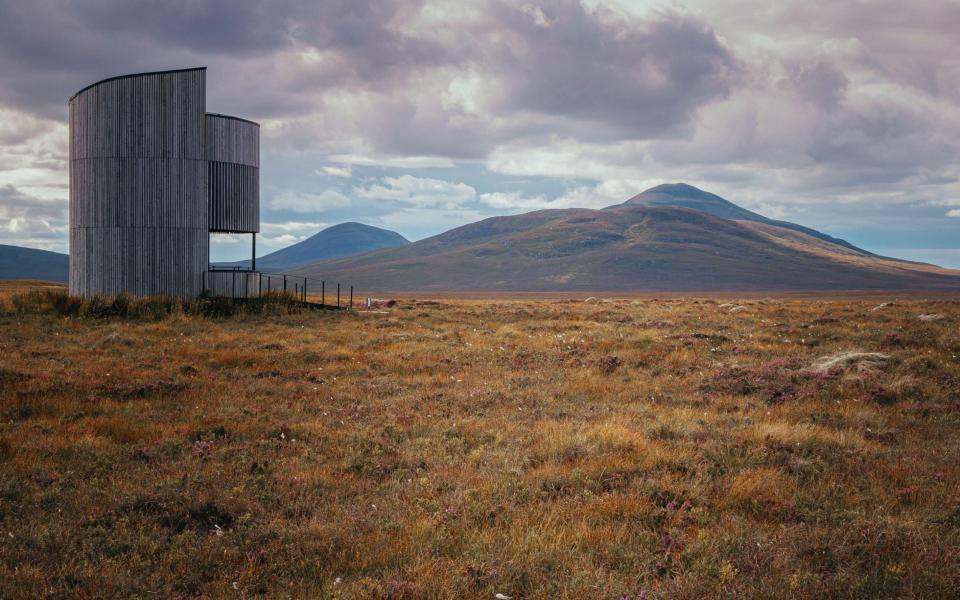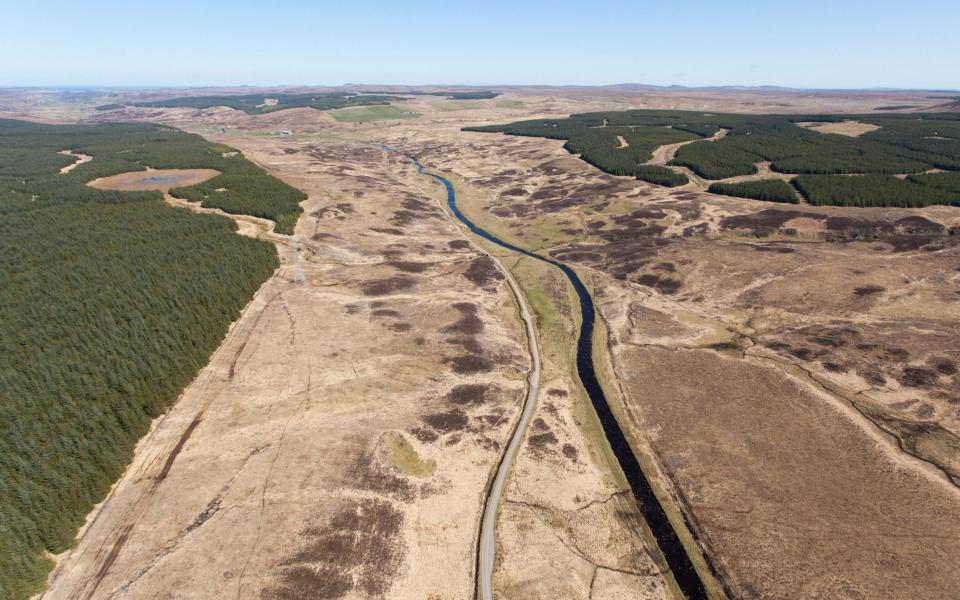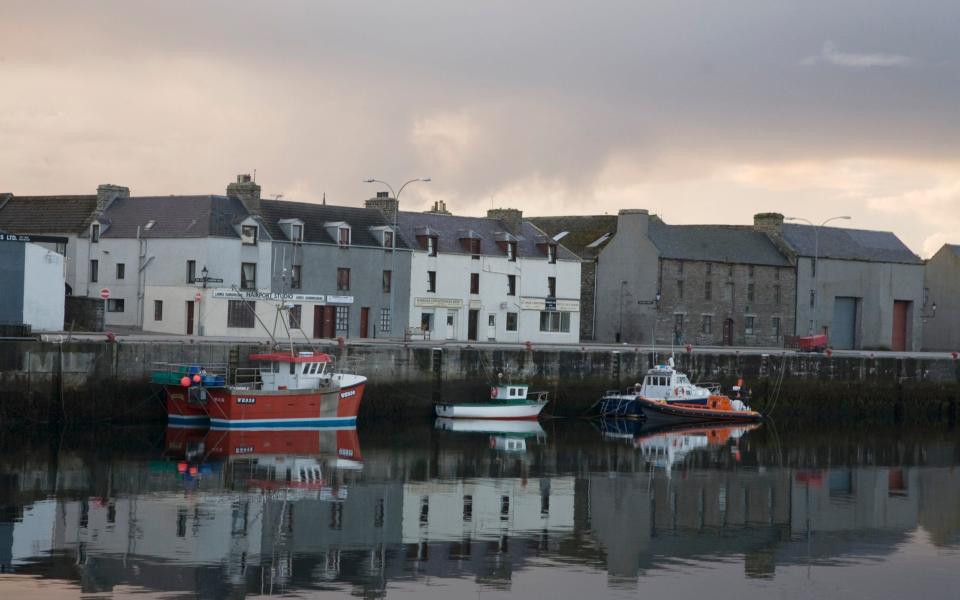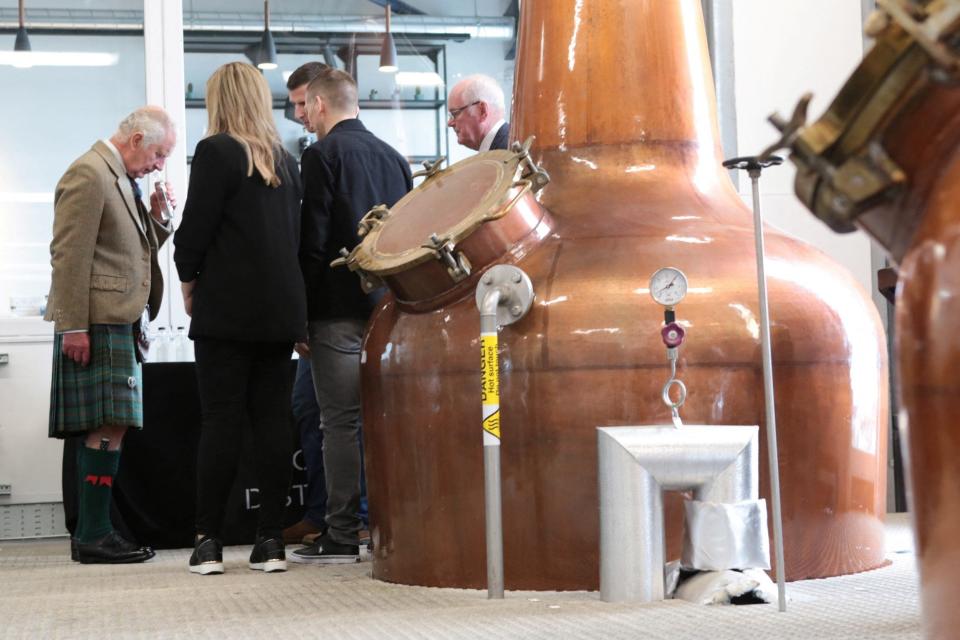I was giddily excited about the trip to Wick and Thurso. I’d only been to the north-east corner of Scotland once before – a flying visit to John O’Groats after a road trip from Land’s End. I have few memories of it other than signing a book to record my visit and feeling that it was a bit sad to drive there when so many people cycled or even, like Ian Botham, walked.
This time I took the train. Living in Lancashire, the Caledonian Sleeper is not as convenient as it is for Londoners. The bus stops in Preston at 12:30 on the way out and around 4:30 on the return journey. I managed to doze off for a few hours and woke up somewhere north of Perth with coffee and porridge.
The snow was all the way to the track side. I saw a deer on a hill. I saw the large plate of the central plateau of the Cairngorms. I saw the word ‘Dalwhinnie’ and could almost taste the little drams. But let me rush on past Inverness – a beautiful, rather posh city, firmly on the tourist route – and take us to the Far North Line.


This 260 kilometer long railway line winds through Flow Country: the largest blanket bog area in the world. Look at a map and you will be struck by the extensive meanders of the line.
Although traversing wetlands is not easy, it is easier than walking along the inlets and ups and downs of the coast. The train travels over an embankment and you see glistening pools, streams and spongy peatlands consisting of peat moss, lingheath, asphodel and butterwort.
The peat was formed over 10,000 years and is up to ten meters deep. In the 1970s and 1980s, government tax breaks encouraged forestry and areas of swamp that had long been treeless were drained with deep furrows and planted with fast-growing conifers.


The Flow Country became a battleground between pro-plantation developers and conservationists concerned about the destruction of such a rare, undisturbed habitat.
The area now has a chance to recover, which is good for the planet – peat is an excellent carbon store – and for the native fauna. Merlin, short-eared owls and golden eagles hunt over the mosses and puddles.
Loons, plovers and greenshanks feed and nest in the wetlands. Microhabitats support insects, spiders, amphibians, reptiles and small mammals such as shrews. In February 2023, a bid was submitted to UNESCO to recognize this magical region as a World Heritage Site.
Under the waning sun, the tough grasses looked golden. It reminded me of the Patagonian steppe. When I first traveled to southern South America in the 1990s, I looked for analogues of the landscapes of my home in Lancashire. Now I find myself spotting little Patagonias in my home country. Our northern end of the world is as tempting as that of Argentina and Chile fin del mondo.
Wick is a solid, stone town with a special atmosphere. The name is derived from Vik – indicative of a distant Scandinavian past – but rose to prominence as a fishing port in the 19th century. It is divided in two.
On the left bank of the river lies a city center that has seen better days. For every store still open, there are three empty ones. I checked into the Mackays Hotel for two nights, on the other side of the river. It’s a cozy place with delicious steaks and whiskeys, located on Ebenezer Place, the shortest street in the world. When night fell or it rained, it was my refuge.
Pulteneytown, the oldest planned industrial settlement, was built behind the hotel. Thomas Telford built the harbor in 1803-11, adding a neat grid of houses for workers and managers. Right in the middle of the upper part of the houses is the Old Pulteney distillery; I was given a tour of the mashtuns, pot stills and dark warehouses, followed by a tasting. It’s strange to drink single malts in the afternoon, but not unpleasant at all.


Nearby was the town’s other major attraction: Wick Heritage Centre, which tells the story of its fame as Europe’s largest herring fishing port through an eclectic mix of artefacts: a tipper oven, old and new militaria (Wick suffered the first daytime bombings on mainland Britain in World War II), a fishing boat and the fantastic Johnston photo collection.
The close-ups of fishermen were moving and the panoramic images of the harbor filled with barrels of salted ‘silver darlings’ were beautiful. Thousands of men came here to make money and spent their free time in local bars. The city gained a reputation for heavy drinking, fighting and prostitution. Temperance advocates joined forces with local women fed up with empty pay packets. The ban was eventually imposed along American lines. It lasted from 1922 to 1947.
I told Donald Henderson, chairman of the Wick Society, which runs the heritage centre, that the landscape reminded me of Patagonia. He nodded and mentioned, almost as an aside, that many people from Caithness emigrated to Patagonia to work on sheep farms. The next day a book called From Caithness to Patagonia by Ian Leith was left at the reception in Mackay. Life imitates daydreaming.
A mid-morning walk took me along the coast, past the harbor and an old quarry that was home to petrels. There were lobster pots and a few boats, but the boom today is wind power; turbine and cabling equipment filled the docks. I walked past The Trinkie, an extraordinary natural seawater lido on a bare rock, and came to a castle known as the Old Man. It was an atmospheric place, with birds soaring on the cold thermals and mist and mist isolating me and the lichen-stained ruin from the rest of the world.


I took the bus to Thurso. There was the option to take a sunrise train, but I didn’t want to rush my Full Scottish. I only knew two things about my destination. Firstly, that it was the most northerly city in mainland Britain. Secondly, that it became bigger and richer thanks to the nuclear test and experiment site at Dounreay, which came into use in the late 1950s – or “went critical”, as the jargon goes.
It was a lighter, slightly livelier town than Wick and had a nice beach. It’s apparently a popular ‘cold surf’ hangout. Once again I found a welcoming hotel, the Pentland, and a great little museum. I learned a nice third thing: that Thurso’s etymology contains an allusion to Thor, the god of storms, sacred groves and trees.
You can’t get here without checking out Dunnet Head, Britain’s most northerly point. Then I spent some time with Martin Murray, who runs a nearby gin distillery. He rebuilds an old grain mill in Castletown to make whisky, using the famous Caithness flap stone – as used at Ground Zero in New York – and retaining many original features.
The Wolfburn and North Point Distilleries, which opened close to Thurso in 2013 and 2020, and the even newer 8 Doors Distillery at John O’Groats, are already transforming the highest corner of the Highlands into a whiskey hotspot.


I tried a drop of peated whiskey from the 8 Doors on the spot. Then I met American expat Jay Wilson, who created the John O’Groats Trail about a decade ago. We did the short coastal walk to Duncansby Head, the most north-easterly point.
It was a more than fitting end to my mini odyssey. Jay showed me some geographical areas – deep gullies where the sea rushes in – and led me across a patch of carpet peat. It rolls and shifts just like a soft rug. Flow Country is a perfect name. On the promontory, below the lighthouse, I looked back and saw, behind a wall of dramatic cliffs, the Noss Head lighthouse at Wick.
But which way should I look: down or up? Thurso was far to the north – as far from King’s Cross as Budapest is from Paris. But my eyes were drawn to Stroma and the Orkneys. Why do travelers long to get to the end of the line?
I don’t have an answer, but I think the urge is strongest in wide open landscapes. Perhaps Thor came ashore and flattened Caithness and Sutherland by stamping his divine feet, just to leave us wanting more.
Chris Moss’ trip to Caithness was supported by Visit Scotland And Caledonian sleeper. Mackays Hotel has B&B doubles from £115. The Pentland Hotel offers B&B doubles from £88. The standard tour at Old Pulteney costs £15pp. See the websites of the Stream country, Caithness and Sutherland Tourism and the official distilleries map For more information.